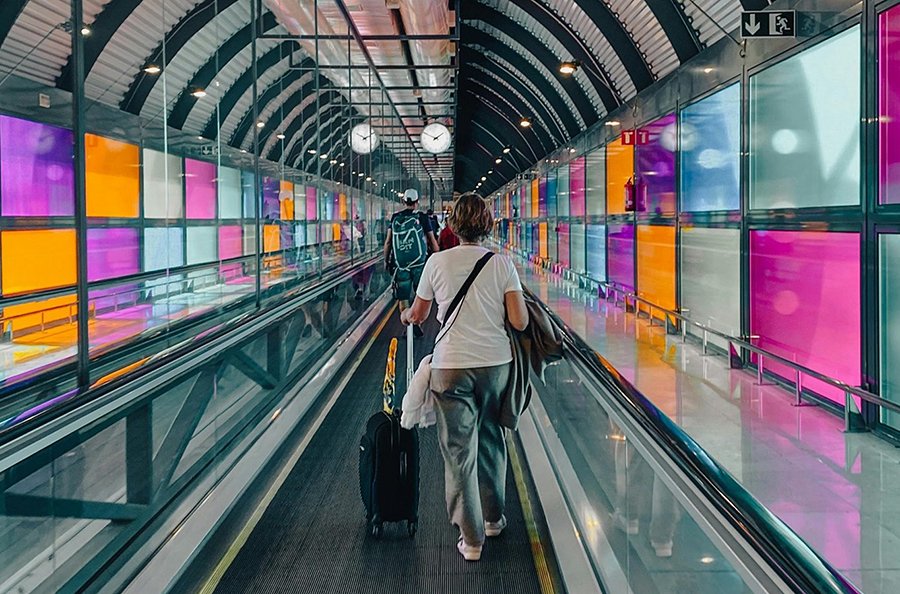читайте также
 US Aviation Chaos: 58 Cancellations and 2,674 Delays Hit Major Hubs as Thousands of Passengers Are Stranded
US Aviation Chaos: 58 Cancellations and 2,674 Delays Hit Major Hubs as Thousands of Passengers Are Stranded
 New priorities in the U.S. real estate market: from senior housing to data centers
New priorities in the U.S. real estate market: from senior housing to data centers
 SLH’s Groundbreaking Sustainability CTA Report: How Verified Standards Are Changing Luxury Travel — And How Hotels and Airlines Are Responding
SLH’s Groundbreaking Sustainability CTA Report: How Verified Standards Are Changing Luxury Travel — And How Hotels and Airlines Are Responding
 Housing Prices in Russia Will Rise by 10–15% in 2027: Dom.RF Forecast
Housing Prices in Russia Will Rise by 10–15% in 2027: Dom.RF Forecast
 Toronto Joins Vancouver, Ottawa, Montréal, Québec City, and Kelowna in Raising Tourism Taxes from 2026: What Travelers Should Expect
Toronto Joins Vancouver, Ottawa, Montréal, Québec City, and Kelowna in Raising Tourism Taxes from 2026: What Travelers Should Expect
 Europe’s Economy 2025: ECB Records Service-Sector Growth and Export Decline
Europe’s Economy 2025: ECB Records Service-Sector Growth and Export Decline
Airports 2026: What Passengers Really Want — Key Global Trends

Photo: Travel Daily News
Passenger habits and expectations are shaping new directions for airports worldwide in 2026, according to research by ACI World in its latest ASQ Global Traveller Survey. The study surveyed 4,125 travelers from 30 countries, revealing a clear demand for a more human, personalized approach, transparent processes, and a calmer airport environment.
The sixth edition of this global survey reflects long-term expectations and serves as a strategic guide for airports updating their commercial, operational, and customer-experience models. According to ACI World, passengers want an environment that reduces stress, fosters trust, and offers greater comfort. This shift goes far beyond efficiency: travelers expect a more welcoming atmosphere and a cultural connection to the destination they are arriving from or heading to.
Human Interaction Matters
Despite growing reliance on digital systems, travelers still view airport staff as a core part of the pre-departure experience. According to the survey:
- 44% highlighted staff empathy
- 48% appreciated proactive assistance
These results underscore rising expectations: passengers want staff to help them navigate, reduce anxiety, and create a sense of confidence in the terminal. ACI World notes that the emotional dimension is now part of how travelers evaluate an airport — and it influences their willingness to return.
Technology and Service: “Ready-to-Fly” Becomes the Norm
Interest is rising in solutions that allow travelers to complete airport procedures before arriving at the terminal. Passengers respond positively to:
- remote check-in
- off-site baggage drop
- biometric identification
Willingness to use biometrics increased to 72% in 2025, up from 57% in 2021, showing growing trust in these tools. The “ready-to-fly” model — where many steps are completed in advance — is gradually becoming standard, helping reduce pre-flight stress.
Meaningful Moments: Local Culture in Terminals
Travelers highly value airports that offer a cultural sense of place beyond efficiency alone. Local food, distinctive products, and regional elements enhance satisfaction.
ACI World findings show:
- 44% say local cuisine helps them feel the identity of the destination
- 40% pay attention to local products in shops as part of the airport’s authenticity
These details make the airport stay more meaningful and elevate the overall travel experience.
Comfort First: Quiet, Clean, Well-Designed Spaces
Passengers consistently highlight the importance of:
- comfortable waiting areas
- low noise levels
- clear navigation
- spaces that encourage relaxation
Such conditions create a calm rhythm for the journey and strongly influence perceptions of the airport.
Sustainability With Visible Impact
Passengers respond best to sustainability initiatives that deliver clear benefits to the local community. While sustainability is not considered the airport’s main mission, visible contributions matter.
ACI World survey dаta:
- 49% believe supporting local/regional tourism brings the greatest community benefit
- 42% value airports that create local jobs
Projects like developing transport infrastructure, job creation, or environmental protection help strengthen trust and reinforce the airport’s role in the region.
ACI World: “Travelers Want a More Human Airport Experience”
ACI World Director General Justin Erbacci emphasized that the shift underway is conceptual, not technical.
“Today’s traveler has moved beyond simply wanting a faster process — they want an experience that feels more human and alive,” he noted.
“Passengers expect technologies that remove friction, and people who work with empathy. They want personalized, ready-to-fly solutions even before arriving at the airport, calm spaces, recognizable local character, and clear demonstrations of social responsibility.”
Global Air Traffic Outlook: 2026 Will Break Records
According to ACI World, global passenger traffic in 2025 will reach 9.8 billion, growing 3.7% year-on-year. International travel may increase by 5.3%, while domestic traffic will grow more moderately — by 2.4%.
In 2026, global aviation is expected to surpass 10 billion passengers for the first time in history.
Breakdown by regions:
- Asia-Pacific: ~3.6 billion passengers (+5.6%)
- Africa: fastest growth (+9.4%), reaching ~273 million
- Middle East: ~466 million (+5.9%)
These differences reflect demographic factors, regional economic conditions, and structural features of air travel. Growing volumes and rising international flows strengthen pressure on airport service quality.
International Investment: “Airports Must Humanize the Experience”
Experts at International Investment note that changing expectations are affecting the entire travel ecosystem. Hospitality trends mirror those in aviation: growing demand for personalized service, quieter environments, intuitive digital tools, and stress-reducing processes.
International hotel brands are:
- redesigning spaces to create calm and comfort
- enhancing digital pre-arrival tools
- developing localized service concepts
- prioritizing transparent, easy-to-understand customer journeys
Both the airport and hotel sectors now face the same strategic task: create a journey that feels seamless, human, culturally rich, and stress-free.
Подсказки: airports, aviation, ACI World, passenger experience, biometrics, sustainability, travel trends





